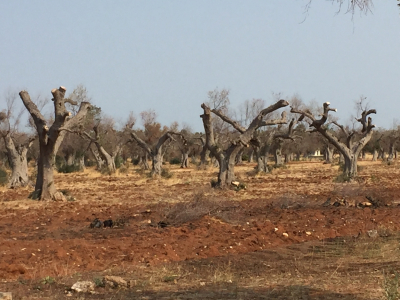Xylella fastidiosa roadmap and climate change
The olive tree as a solution in the fight against climate change The objective of the IOC is to “present the olive grove as an environmentally positive crop because of its potential to store and extract CO2 from the atmosphere”

FR-XF OLIVIER: Xylella fastidiosa roadmap Three main priorities for the world olive sector are protecting the world olive heritage, facilitating exchanges in healthy olive seedlings and standardising international trade. In order to identify more practical solutions for the prevention, control and elimination of Xylella fastidiosa, a bacterium that affects more than 350 plant species and in particular olive trees, and to define measures that do not hinder the development of exchanges and international trade in olive trees, the Executive Secretariat organised an event entitled Integrated actions against Xylella fastidiosa to protect olive trees and facilitate international trade.
This event was organised in collaboration with international organisations already working on Xylella fastidiosa, such as the International Centre for Advanced Mediterranean Agronomic Studies (French acronym CIHEAM); the European and Mediterranean Plant Protection Organization (EPPO); the International Plant Protection Convention (IPPC); and the United Nations Food and Agriculture Organization (FAO). Experts from 17 countries attended, as well as representatives from 7 international organizations to discuss a joint plan of action. The aim of this event was to share the results and conclusions of recent research and to draw up a roadmap (FR-XF Olive Tree) and a joint plan of action (PAC-XF Olive Tree) that can be used by all operators in the sector
The interaction between olive growing and the environment
The olive tree as a solution in the fight against climate change The objective of the IOC is to “present the olive grove as an environmentally positive crop because of its potential to store and extract CO2 from the atmosphere”.
The following strategy has been adopted:
– Create a computer tool to determine the CO2 balance of olive oil
– Promote the positive impact of this crop on the environment
– Define a positive differentiation tool recognised by the global market
Conclusion: The olive sector can absorb an average of 11kg of CO2 from the atmosphere per litre of olive oil produced. Implications: This will contribute to developing an environmental label for olive oil, a tool for national and international trade.
Photo by Olio Officina
To comment you have to register
If you're already registered you can click here to access your account
or click here to create a new account


Comment this news